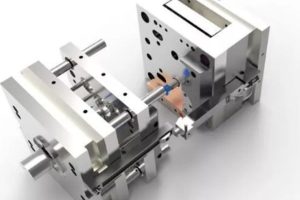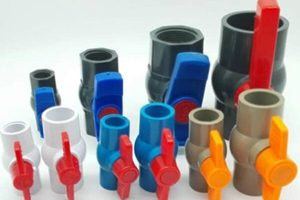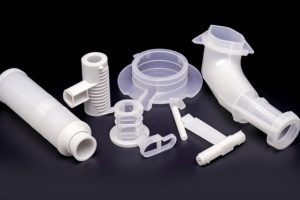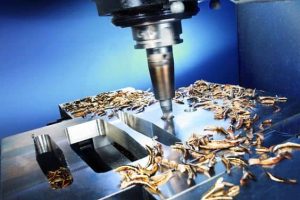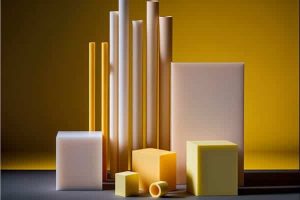A parting line is a line that divides the mold into two parts – the core and the cavity. The concept of a parting surface is similar.
The parting line is a surface that divides the mold block into two parts – the core and the cavity.
In injection molding, the parting line is the line where the two mold halves meet, and the parting surface is the mold surface that forms the boundary between the two mold halves.

The purpose of the plastic parting line is to allow the two mold halves to separate so that the molded part can be ejected by the ejector. The position of the parting line flash has a significant impact on the appearance of the molded part and its structural integrity.
Unqualified parting lines will result in flash on the product after injection moulding. Secondary operations to remove parting line flash will result in higher labour costs and affect the aesthetics of the product.

What is a parting line and what is a parting face?
The parting surface is the surface of the mold that is perpendicular to the parting line. The purpose of the parting line is to separate the two halves of the mold so that the molded part can be ejected by the ejector pin.
A parting line in the industrial casting of molds,is the border line in which draft angles change direction. One can check the parting line in the mould or product which divides the two half, the core and the cavity of a molded part. It is sometimes a starting point for the mold parting surface.

Definition of parting line
In injection molding, the parting line is the line where the two halves of the mold come together.
In some cases, there may be more than one parting line, which can be used to create different appearances for the same molded part.
However, multiple parting lines can also lead to increased mold wear and may require more frequent maintenance. Therefore, the location of parting lines must be carefully considered when designing injection molded parts.

Types of the parting lines
Beveled parting line
As the name implies, the shape of the parting line is beveled. Curved parting line: as the name implies, the shape of the parting line is curved. Vertical parting line: it is formed in a perpendicular direction from the mold opening direction.
Stepped parting line
Machinists make the plastic parting line in a stepped shape. For this type of parting line, there is usually a large force on one side of the cavity. This leads to the possibility of relative sliding between the fixed and moving halves of the die.

Comprehensive parting line
Designed based on the structure of the plastic part, it can combine all other parting line forms.
Definition of parting surface
A parting surface is a separable contact surface that separates the mold to remove the product and the congealed material from the pouring system. A mold may have one or two or more parting surfaces depending on the need. The parting surface may be perpendicular to the closing direction, or parallel or inclined to the closing direction.
The parting surfaces provide support to the mold during the injection process and help to distribute the molten plastic evenly. It is important to design the parting line and parting face carefully to minimize potential defects in the molded part.
Forms of parting surfaces In terms of the number of parting surfaces, there are single parting surfaces, double parting surfaces, and multiple parting surfaces.
In terms of the shape of the parting surfaces, there are flat, beveled, stepped, and curved surfaces.

Types of parting surfaces
The shape of the parting surface varies according to the contour or profile of the path. They can be divided into five different types.
Planar or right-angle parting surfaces
A flat parting surface or right angle parting surface is one in which the workpiece is supported by a horizontal or vertical surface during machining. The most common type of flat or right angle parting surface is a panel, which is simply a flat plate with a hole in the middle for mounting the workpiece.
Other types of flat or right-angle parting surfaces include T-slots, V-blocks, and corner plates. While panels are the most common type of flat or right angle parting surface, they are not always the best choice for every application.
In some cases, it may be necessary to use a different type of flat or right angle parting surface to achieve the best results.

Stepped parting surfaces
A stepped parting surface is a molded surface used to create prototypes or production parts with complex geometries. It is achieved by machining a series of flat surfaces on a single piece of material and then assembling these surfaces together to form the desired shape.
This method is often used to make parts with sharp corners or angles, or to make irregular shapes that are difficult to make by other methods. Stepped parting surfaces can be made from a variety of materials, including metals, plastics, and composites.
In addition, they can be coated with a variety of finishes, such as paint or plating, to create a usable end product.

Angled parting surfaces
Angled parting surfaces are those that are not perpendicular to the plane of the mold. They can be internal or external. Angled parting surfaces are used when the molded part needs to be removed from the mold without distortion.
When angled parting surfaces are used, the mold is opened by moving the mold halves at an angle to each other. The size and shape of the angle depends on the application. Angled parting surfaces can be used with either a cold runner system or a hot runner system.
In a cold runner system, an angled parting surface allows the molded part to be easily released from the mold without distortion. In hot runner systems, angled parting surfaces help prevent flowing material from adhering to the mold surface.

Inclined parting surface
Angled parting surfaces are an essential tool for many machinists and manufacturers. By creating an angled face on two surfaces, it allows for a tight fit and precise measurements.
Angled parting surfaces also help to reduce friction and wear by providing a smoother contact surface. In addition, angled parting surfaces can be used to create channels or recesses that can be used to channel fluids or other materials.
Thus, an inclined parting surface is a versatile tool that can be used for a variety of applications.

Complex or shaped parting surfaces
Complex or shaped parting surfaces can present challenges when molding. If the injection mold is not properly prepared, the chances of successful mold release are greatly reduced.
When molding complex or shaped parting surfaces, there are steps that can be taken to improve the chances of success. First, it is important to ensure that the mold is clean and free of any debris. This will help ensure that the release agent adheres to the mold surface properly.
Second, it is important to use a high-quality injection mold release agent. A good rule of thumb is to use two coats of release agent for every coat of paint.
Finally, it is important to allow enough time for the release agent to cure before starting the injection molding process. By taking these simple steps, you can help ensure that your molding project is a success.

How do I create a quality parting line and parting surface?
A parting line is a line where two different parts of the mold come together. The parting line is also the line where the mold opens to release the part. The parting line is the surface of the mold that makes up the parting line.
It is important to create a quality parting line and surface because it affects the appearance, function and assembly of the molded part.
When designing a new part, engineers must consider the type of material being molded, the production process, and the characteristics of the part to be molded.

The three most common types of parting lines are straight line, stepped line, and contoured line. The type of parting line should be based on the type of material being molded and the desired properties of the part being molded.
For example, if a part needs to be very strong, then a straight parting line may be used. If aesthetics are more important than strength, then contour parting lines might be used.
Step parting lines may be used when two different materials need to be molded, or when different levels of texture need to be created on the surface of the injection molded part.
The choice of parting surface depends on the type of material being molded and the production process. The most common types of parting surfaces are polished, textured and ground.

Summary
Parting lines are an important consideration in any mold design. They can have a significant impact on the strength, appearance and function of the final part. Surfaces also play an important role in mold design. They can affect the appearance and function of the final part, as well as the ease of release.
keep in mind that the suggested parting line may not be your only option. Both parting lines and surfaces must be carefully considered in order to produce high quality parts, and ZetarMold, as a team of established industrial designers, does a great job of designing products in a way that not only gives them a novel appearance, but also captures the achievability of the production aspects.

